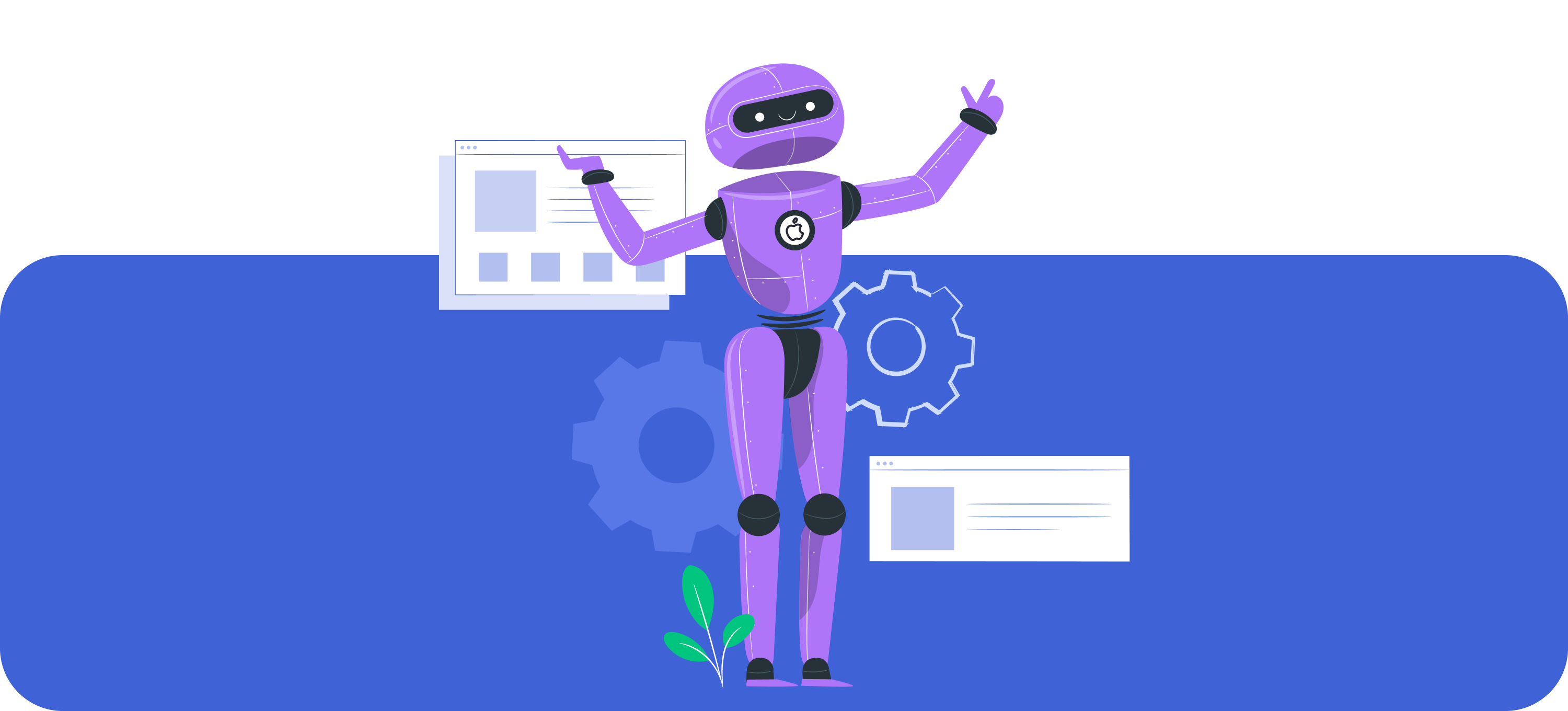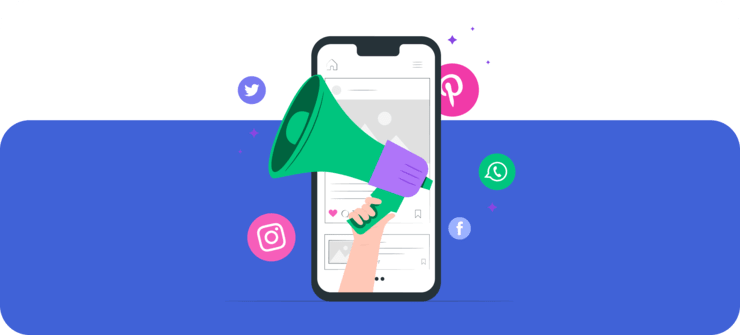How to Distribute Your iOS App without using the App Store

As an app developer, you may be wondering about the best distribution methods for your iOS app. After all, Apple's App Store is definitely the most popular option, but it's not the only one. You actually have multiple distribution methods to consider, depending on your app's purpose and target audience. In this blog post, we'll take a look at each of these distribution methods and how you can use them to get your app into the hands of your target audience. Keep reading to learn more!
Apple App Store Distribution:
IOS apps are hot property these days, and for good reason. They offer a unique user experience that can't be found on other platforms. However, distribution of iOS apps through the Apple App Store can be a hassle for some developers. If you're looking to avoid this hassle, there are many distribution options available. One option is to self-distribute your app through online channels such as social media or ecommerce sites. This can be a great way to gauge demand and test the app before making it available on the App Store. Another option is to use a third-party distribution platform like Android Market or Blackberry App World. These platforms provide a range of features and security measures, making them a preferred distribution method for many app developers.
1. Ad- hoc deployment:
Now that you have your app all set up and ready to go, it's time to distribute it! There are a few important things you'll need before doing so, like an iTunes Connect account, certificates, and device backups. Next, name your project and choose iOS as the platform - iPhone or iPad - then click Next. If you'd like to use Touch ID authentication withpassword protection, select Single View Application as the template type, enter your desired name for the app, and click on Create. This method works well for smaller apps that don't need to go through Apple's approval process. Now it's time to get started! Launch Xcode and select "New Project..." from the main menu bar. From there, select "Ad- hoc deployment." This will launch the Ad- hoc deployment wizard. Follow the instructions on the wizard to set up your app ad- hoc. Once everything is set up, your app will be ready to go!
Pros of Ad- hoc deployment:
Ad- hoc deployment of an app can be a useful tool in case you need to release an unauthorized version of your app. It is also possible to do it on a small scale without any prior notice, which saves you from having to pay Apple's fees. Finally, ad-hoc deployment allows you to test your app before releasing it publicly.
Cons of Ad- hoc deployment:
Ad- hoc app deployment is a quick and easy way to get your app into users' hands, but it has some downsides. You cannot track or audit the performance of the app, which can be problematic. Furthermore, it takes a long time to get an app in front of users - could take weeks or even months. Also requires lots of manual work - you have to create and manage distribution channels yourself.
2. Enterprise In-House App Deployment:
For businesses with iOS app needs that go beyond those of the average app user, enterprise in-house app deployment is the perfect solution. This process allows you to deploy your app to employees' devices through an in-house process, which is faster and more secure than using the App Store. With enterprise in-house app deployment, you can be sure that your app is up to date and secure. Additionally, you can manage app permissions and app signing in a centralized way, making it easy to keep your app store management streamlined and efficient. If you're ready to take your app deployment to the next level, consider enterprise in-house app deployment.

Pros of Enterprise In-house app deployment:
When it comes to app deployment, enterprise in-house is the way to go. Not only does this approach allow you to tailor the app exactly to your business needs, but it also reduces customer support time and eliminates any need for third-party server storage. In addition, updates and patches are automatically deployed without any user interaction - meaning that your app remains up-to-date and bug free. Furthermore, companies that opt for in-house app deployment can trust that their apps are fully secure as they aren't stored on a third party's server. This makes them immune from data breaches or other security incidents
Cons of Enterprise In-house app deployment:
There are some clear pros and cons to enterprise in-house app deployment. However, the benefits of this process far outweigh the negatives when done correctly. Here are a few things to consider before making the decision: 1. Managing multiple app versions can be time-consuming and difficult, as different team members may have different versions of apps on their devices. 2. App deployment can also be expensive - you might need licenses for various device types, or pay per user for employees who want access to your apps outside of work hours. 3. There is always a risk of data loss and security breaches when deploying enterprise apps - make sure you have an appropriate backup system in place! 4. One major advantage of using an app automation tool like Zapier is that it makes app deployment much easier - all you need to do is set up rules that automate tasks such as emailing users about updates or sending push notifications regarding new features being added to your app(s).
3. B2B VPP App Deployment Method:
There are numerous ways to distribute your iOS app without using the App Store. One of the most popular methods is app deployment via iTunes Connect. This enables you to upload your app, configure settings, and test it with users before submitting it to the App Store. Before you choose a method, make sure you understand your business requirements and how the chosen method will meet them. Once you have decided on a method, prepare the necessary files by creating mockups and testing them with users. Finally, pload to a cloud service like AWS or Azure.
Pros of B2B VPP App Deployment Method:
B2B VPP app deployment method is an excellent way to deploy updates and new features to your app users without the need for Apple review or approval. This saves you time and money, as well as avoiding any unnecessary delays. Additionally, since B2B VPP app deployment method automatically goes through the app store, your app is available on the devices of your customers instantly - a great advantage in today's competitive market conditions!
Cons of B2B VPP App Deployment Method:
There are several pros and cons of the B2B VPP app deployment method. While it does require an in-depth understanding of your app ecosystem and the users that use them, this approach can be very effective when done correctly. However, there are also risks associated with this method - especially if it's not executed perfectly from start to finish. Additionally, a lot of hard work is required to get things off the ground successfully. So while it might be worth considering this option for larger companies with more resources at their disposal, smaller businesses may find it too risky or time-consuming to take on board
Why is it Necessary to Distribute an iOS App without using the App Store?
IOS app distribution is a complex process that involves a lot of steps and considerations. By using a distribution platform like HopperHQ, you can bypass the App Store and generate more revenue. Why is this important? Well, it gives you total control over app store listings and features, as well as the revenue that your app generates. Additionally, it's possible to create custom APKs that are optimized for different countries or devices. So, if your app is meant for a global audience, it can be distributed through a platform like HopperHQ. In conclusion, using a distribution platform like HopperHQ is the best way to distribute your iOS app without using the App Store.

Push Notifications
IOS app users love being kept in the loop - especially when it comes to important updates. That's where push notifications come in - they let you send messages and events directly to users' devices, without them having to open your app. Push notification delivery is easy - all you need is Apple's instructions. Once you've set it up, you'll be able to see how well your notifications are being delivered and how much engagement they're resulting in. Not only are push notifications a great way to keep app users updated, but they're also a great way to increase user loyalty and engagement. So, make sure to use them to your advantage and see your app's performance skyrocket!
Embedding Apps
IOS app distribution is a process that can be quite tedious and time-consuming. Luckily, there are a few different methods you can use to get your app out there without the need for the App Store. One of the most common methods is embedding your app. This involves placing your app inside another app, or on a website. There are also a number of ways to distribute your app without using the App Store. One option is to use a testing server, which allows you to test your app before submitting it through iTunes Connect or the Mac App Store. If you're using CocoaPods for development, there's also a pod distribution feature that lets you distribute apps without using the App Store at all! So, whether you're looking to distribute your app without using the App Store or just want to save some time, using a testing server or CocoaPods is a great option.
Private App Distribution
When it comes to distributing your iOS app, there are two main methods - using the App Store and using private app distribution networks. Which one is right for you depends on a number of factors, including your app's features, target market, and budget. One option is to use an external app store, like Google Play or the Apple App Store for Businesses. This way, you have more control over the app's features and can market and sell it more easily. However, this method has its downsides. For example, you need to pay developer fees and Apple takes a 30% cut of your app's sales. Another option is to create a private APK distribution channel and sign up with a private application distribution network (ADN). This is a more involved process, but it allows you to keep more of the revenue generated from your app.
In-App Purchasing
There are a few ways to distribute your iOS app without using the App Store. One option is in-app purchases, which lets users pay for features within your app without having to leave it. This is a great way to monetize your app and make it more sustainable. However, in-app purchases can be intrusive and difficult to manage, so it's important to consider all the pros and cons before making a decision. Another option is to use an ad network, which will give you more control over how your ads appear and what percentage of revenue they generate. This is a good option if you want to target specific demographics or if you want to make more ad-hoc payments. However, it's important to be aware of potential privacy risks. Last but not least, you can distribute your app through the App Store itself. This is the least invasive option and has the least amount of risks, but it does come with a few restrictions - for example, you can't make in-app
External App Distribution
There are many ways to distribute your iOS app without using the App Store. External app distribution platforms offer great customer experiences, fast distribution speeds, and a wide range of options for app promotion. One of the best options is to use an external app distribution platform. They will take care of the entire process for you, from app promotion to customer service. Plus, they offer a wide range of features and tools to help you reach your target audience. So, whether you're looking for a fast and affordable solution, or want to build a self-distribution channel that meets your specific needs, external app distribution platforms are a great option to consider.
Frequently Asked Questions
Can I monetize my app outside of the App Store without risking legal action from Apple?
Yes, you can monetize your app outside of the App Store without risking legal action from Apple. Paid subscriptions and microtransactions are two methods that you can use, but it is not easy or straightforward. Make sure to read up on app store monetization strategies before starting your project to avoid any potential trouble. App store rules prohibit developers from making money off of in-app purchases, ad space selling, and other features that users cannot disable. This means that some ways of making money through your app may be restricted depending on your app's location and genre. For example, selling ad space for apps marketed towards children may be prohibited depending on the app's location or genre.

What are the different types of distribution methods available?
There are three main distribution methods for iOS apps- free app distribution, paid app distribution, and a hybrid model. Free app distribution is the most popular method of distributing app, as users can enjoy some features or benefits in exchange for using the app. An example of this would be a freemium model where users can enjoy some features or benefits in exchange for using the app. Paid app distribution is the most efficient way to distribute an app, as it reaches more users than any other distribution method. This method usually involves developers selling their apps through stores like the App Store and Google Play store, which allows them to make high profits. The hybrid model mixes paid and free methods, with a portion of the userbase required to pay for accessing premium features. For example, a developer may offer a free version of their app with limitations, while a premium version offers all features at no cost.
What are some common problems that users experience when downloading apps from an external platform?
Users commonly experience problems when downloading apps from an external platform. For example, they may not be able to find the app once it's been downloaded. Another common issue is that the app becomes locked out or crashes. To avoid these types of problems, it can help to distribute your app through different channels like App Store Optimization, InApp Billing, Cross Promotion with other apps, and Direct Download Links.
How do I choose the right distribution method for my app?
If you're app is designed for the iOS platform, the most common distribution method is through paid direct marketing. This means that you'll be able to email or contact your target audience and offer them a discount code or bonus reward in exchange for downloading and/or using your app. Another way to get your app in front of new potential users is through in-app purchases (IAP). This is a method where you'll charge users for extra features, extensions, or access to your app. Alternatively, using the test-driven development method can help you assess how well people are using and liking your app before making any further changes or updates. This will help you avoid making any unnecessary tweaks or updates that may not be well-received by your users.
Is it possible to distribute my app using an external platform?
Yes, it's possible to distribute your app using an external platform like the App Store Preview so that more people can have access to it. This process will require a bit of extra time and effort, but it's ultimately worth it as you'll be able to reach a wider audience. Here are the steps that you need to take to distribute your app this way: 1. First, you'll need to submit your app through the App Store Review process. This process can take a few weeks to complete, but it's important to get it done as early on as possible in order to ensure that your app is accepted for distribution on the App Store Preview. 2. After your app has been reviewed and approved, you'll then need to make sure that it meets all the required requirements before uploading it to the App Store Preview. This includes making sure that your app is visually appealing, contains all the necessary features, and follows store policies. 3. Once your app has been uploaded and accepted for distribution on the App Store Preview, it'll be available to more people around the world!
Conclusion
It can be frustrating when you develop an app and you want to get it out to as many people as possible, but you don't want to use the App Store. This blog will teach you everything you need to know about distributing your app without using the App Store. By following the steps outlined, you will be able to distribute your app in a variety of ways, including ad- hoc deployment, enterprise in-house deployment, embedding apps, private app distribution, and external app distribution. Make sure to check out the blog for more information and helpful tips on how to distribute your app without using the App Store.


